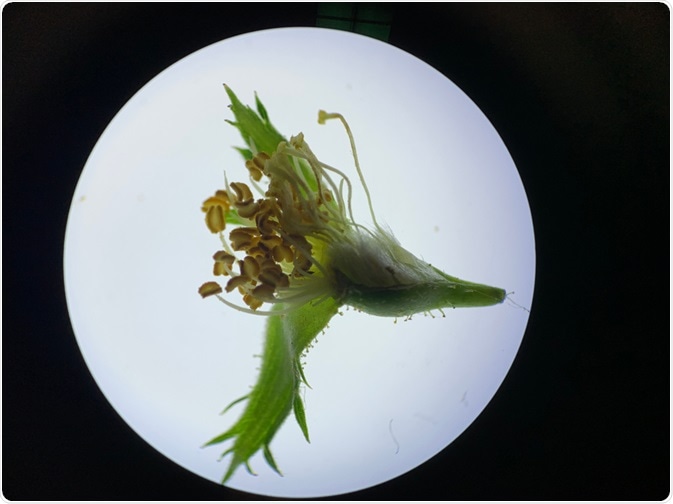Conventional light microscopy is a widely used tool in several areas of scientific study. Light microscopes typically come in two main variants: The compound microscope and the stereo microscope, which both have their uses, although stereo microscopes have distinct advantages over compound microscopes when it comes to studying certain types of sample.

Image Credit: Aj. Jareerat/Shutterstock.com
History of the stereo microscope
The earliest example of a stereo microscope was designed and built-in 1671 by Cherubin d’Orleans, though it was a pseudostereoscopic design, which had major flaws. Only by application of additional lenses was image erection achieved, and the right-side image was projected to the left eyepiece and vice versa.
It was not until over 150 years later that further work on stereomicroscopy was carried out after Sir Charles Wheatstone’s treatise on binocular vision. The first true stereomicroscope was developed in the mid-19th century by Francis Herbert Wenham. His design used a prism to split the light beam.
Since then, the stereo microscope has evolved to become a standard piece of equipment in most laboratories. Elements such as cameras, fiber optic illumination systems and computer displays have been incorporated into stereo microscopes.
How do stereo microscopes work?
A stereo microscope is a type of optical microscope that allows the user to see a three-dimensional view of a specimen. Otherwise known as a dissecting microscope or stereo zoom microscope, the stereo microscope differs from the compound light microscope by having separate objective lenses and eyepieces. This results in two separate optical paths for each eye. Three-dimensional visuals are produced by the different angling views for the left and right eye.
Stereo microscopes use reflected light from the object being studied, compared to the transmitted light that is used by compound light microscopes. Magnification ranges from 7.5 to 75x. Opaque, thick, solid objects are ideal for study with these tools.
Most, but not all, stereo microscopes have two light sources: one above the sample, which is reflected in the eyepieces, and one below the sample for illumination through thinner samples. Resolution is determined by the wavelength of light and numerical aperture of the objective, the same as any other form of optical light microscopy.
Uses of stereo microscopes
Due to their ability to view three-dimensional structures, stereo microscopes can be used in a variety of applications. An operator can work on the specimen they are studying in real-time whilst it is still being observed.
There are many uses of stereo microscopes across a diverse range of industries. Some uses include:
- Surgery – The operating microscope, a variant of the stereo microscope, is used during microsurgery in many hospitals
- Paleontology – Paleontologists use stereo microscopes when they clean and analyze fossils.
- Biological research – Stereo microscopes are used by biologists to aid in dissections.
- Entomology – Used in the study of insects without having to dissect them.
- Botany – Botanists study flowers and other plant structures using a stereo microscope
- Technicians use stereo microscopes when they repair circuit boards
- Quality control – Stereo microscopes are used across all types of industry to check the quality of products, including looking for microfractures
- Pathology – Pathologists use stereo microscopes to examine skin conditions amongst other uses
- Watchmaking – Stereo microscopes are useful in watchmaking due to the delicate nature and small size of components.
Stereo microscopes: observing the microscopic world in three-dimensions.
A mainstay of modern scientific research, industry, and medical practice, the advantages of stereomicroscopy over standard compound microscopy are notable. Incredibly versatile, they remain one of the most useful pieces of scientific equipment nearly two centuries after the first useable examples were designed, and with further technological developments will no doubt be used for the foreseeable future.
Sources
Introduction to stereomicroscopy, Nikon StereoMicroscopyU
microscopyu.com/…/introduction-to-stereomicroscopy
How does a stereo microscope work? Microscope-detective.com
https://www.microscope-detective.com/stereo-microscope.html
Last Updated: Jan 17, 2020

Written by
Reginald Davey
Reg Davey is a freelance copywriter and editor based in Nottingham in the United Kingdom. Writing for News Medical represents the coming together of various interests and fields he has been interested and involved in over the years, including Microbiology, Biomedical Sciences, and Environmental Science.
Source: Read Full Article
